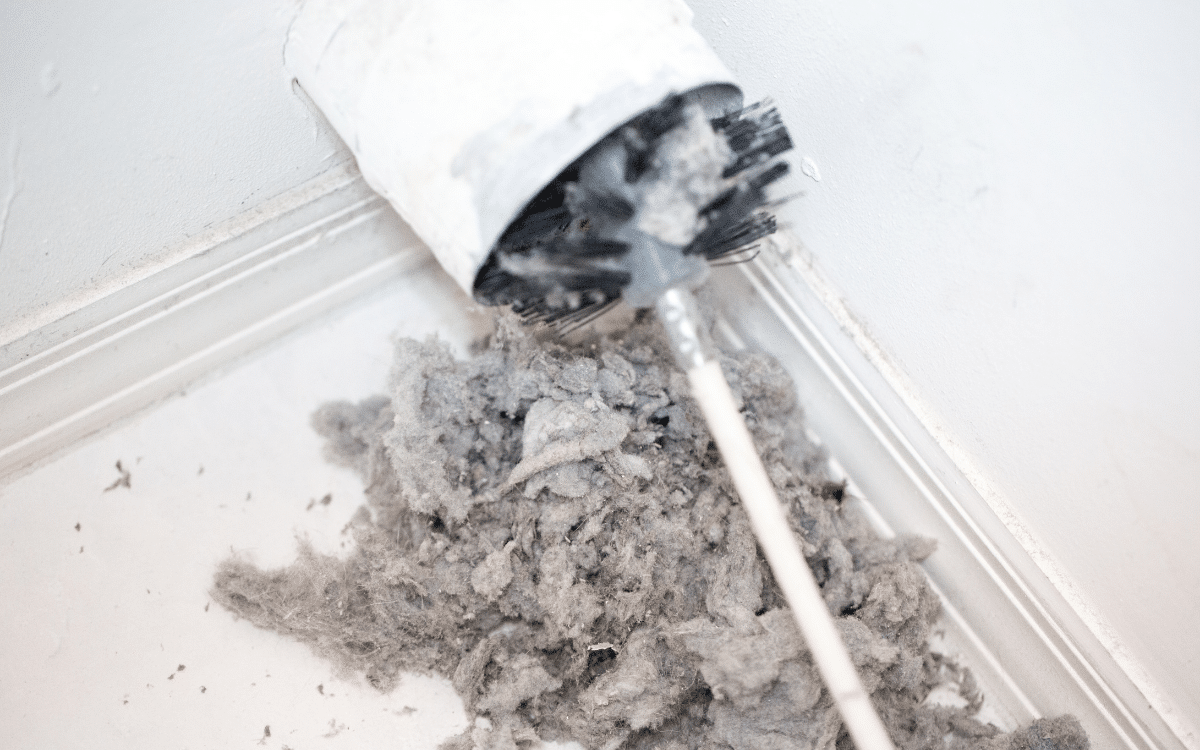Dear Home-Ec 101,
My husband wears a lot of black shirts. Lately, I’ve noticed that his shirts are covered in fuzz and lint. We’ve never really had this problem before. Is the lint coming from my washer or my dryer? Is there anything I can do to reduce the lint? Is there any way I can convince him to use a lint brush before going outside?
Signed,
Fuzzball
Dear Fuzzball:
Is there any chance you recently bought towels, a blanket, or were gifted a deliciously soft and fuzzy robe (see the picture below)? These are known lint offenders. Some never stop shedding lint and will always be a source of annoyance. The robe got tossed. It was SO FLUFFY, but… it was unbelievable how much lint it could create.
Did you know there is more to sorting laundry than just separating lights and darks?
There are a few other levels of laundry wrangling. For example, if there are only one or two people in a household, it may be difficult to get granular in your laundry separation without wasting water and energy. In that case, separate as much as make sense.
Whenever it’s possible, try to keep these items separate.
| Lint Producing Items | Lint Collecting Items |
| Towels Chenille Sweat Shirts Fleece Felt Sweaters Many Brand New Clothing Articles* | Synthetic Fabrics Corduroy Knits |
*New items should be washed separately at least twice to shed lint and ensure they no longer bleed dye.
If you don’t keep your lint producers separate from your lint collectors, this may be the result:
Heavy weight items can also shred the threads of light weight items causing them to break and — wait for it — create lint.
More ways to keep lint in check:
Always, always, always check pockets for stray tissue and paper. Once paper shreds in the washer or dryer, it will take a couple of loads to get rid of the damage. If you have a high-efficiency machine, check the drain filter and ensure it’s not clogged with the remnants.
Cleaning the drain filter may involve a bucket and can be a slimy ordeal if you don’t do this regularly. You have been warned. Check your manual (Google your model #, I know you didn’t keep it, either.)
Make sure you are using the proper amount of detergent for the size of your load and the hardness of your water.
Detergent molecules surround dirt and lint and suspend the particles in the wash water. If there isn’t enough detergent to keep the particles in suspension, they will be deposited on your clothing.
Have you ever rinsed a clothing item in a white sink and seen the grey stuff that clings to the porcelain and has to be rinsed away? It’s the same concept; only the stuff is landing back on your clothing. This is often the source of the “dingy” grey look with white garments. Once it gets dried on, it’s hard to remove.
If you have cold groundwater where you live, i.e., if the water is less than 60°F, don’t use powdered detergent. Temperature is a big factor in solubility, and water that cold may not dissolve all of the detergents. There are workarounds, you could pre-dissolve your detergent in a cup of hot water, but that’s really starting to sound like a lot of effort, and we’re trying to make your life easier, right? Switch to liquid.
Front loading and high-efficiency washer owners, pay attention:
It is imperative not to overload your clothes washer. If the clothing can’t tumble freely, water can’t flow very well, and lint will be deposited back onto the fabric during the wash cycle.
This is not your washer’s fault. Instead, it is what we call operator error. Tech support refers to these situations with the acronym PEBCAK: Problem Exists Between Chair and Keyboard. There are other variations on that acronym, but they all come down to it not being the machine’s fault.
You are also right in suspecting that the lint could come from your dryer. There are a couple of possibilities if this is the case. The first is that no one has been emptying the lint trap regularly. Check this and clean it thoroughly. If you use fabric softener, take it to a sink and make sure water can easily pour through the mesh. If it can’t, use a soft bristled brush and some dish detergent and give it a gentle scrub until the water flows freely.
The second cause is a kinked or clogged dryer hose/vent. Gently pull your dryer away from the wall and detach it at both ends from your wall and your dryer. Be careful; if it rips, you’ll need to replace it. Also, ensure it is free of clogs.
I have heard of using an ELECTRIC (not gas-powered) leaf blower to clear the lint from the vent (the hole in the wall to the outside), but I think this is a case where I would call in a professional. (At least for my house, as it’s not a straight shot and seems like it could cause some harm if it were a thick clog)
As far as getting your husband to use a lint brush? You’re on your own.
Send your questions to helpme@home-ec101.com.







Great post! I hate that dingy grey white look. I don't bleach so I that was the case. Or maybe whomever did laundry put the whites with darks..
I made the mistake of drying off with a brand new towel, before it was washed, burgundy.. oh yeah, that was fun! I was all fuzzed up and dyed red like. 🙂
My recent post Walkers Needed for Team Forever and One More Day Charleston ALS Walk
Good coverage on ways to eliminate the problem! I especially would stress "If you have a high efficiency machine, check the drain filter and make sure it’s not clogged with the remnants." Find out how to do this yourself and do it every 6 months; you'll be glad you did. Ours had a sock that had somehow gotten in there and it was turning to felt – black felt! It was horrid! Another friend had 5 socks in hers…
Another tip– I try to never wash towels, wash cloths or blankets just before "Dress" clothes. If I remember, I wash a load of jeans or play clothes or something like that between.
Thanks Jenny.
I've meant to do a thorough post on finding your drain filter for a while.
The last time we had to clean ours out there was a baby sock, assorted legos, and a bunch of single use ear plugs. My husband works in a steel plant, they aren't quiet places. *I* need to take my own advice and be more diligent about pocket checking.
I do this too! I wash light towels, then other light clothes, then jeans, then dark clothes to help ensure all the lint from the light towels is out of the system before I get to my darks. I generally do another load of jeans between the darks and starting over again with towels.
My recent post ChicaLogic Fixes Slow Computers
While I'm not in the habit of using fabric softener of any kind, if a load comes out particularly linty, I make an exception: I've found that tossing a dryer sheet in with a load of dark stuff helps to reduce the static and allow the lint to (mostly) stay off the clothes and make its way to the lint screen. I don't care what brand as long as it's a scent I can tolerate. Some are just too migraine-inspiring!
This is a very excellent article. I actually learned several things. Nice job. 🙂
My recent post Just Friends
We don't have a huge problem with lint when I use the dryer-it seems like all that rolling around sort of knocks it off. My big issue is lint on dark clothing when I'm line drying. Especially since Yankee Bill owns approximately 3,000 black Harley t-shirts. I pretty much have given in and dry those in the dryer even if I'm line drying everything else.
My recent post Menu Plan 2-28
I am terrible about using enough detergent and also tend to overload the washer/dryer. I’m excited to see how making some changes will improve what my black shirts look like after the next load.
So, I recently washed two floor mats and plugged up everything. Who knew. Anyway, we got all the red fuzz out of the drains and snaked it as well. We have owned this set for at least 12 years and I don’t recall ever cleaning it. The drain filter was full of coins and screws. ( husband, not me). After we cleared everything he ran a cycle and it plugged up again. ??? Could the drum be covered on the other side of the drum. What to do???